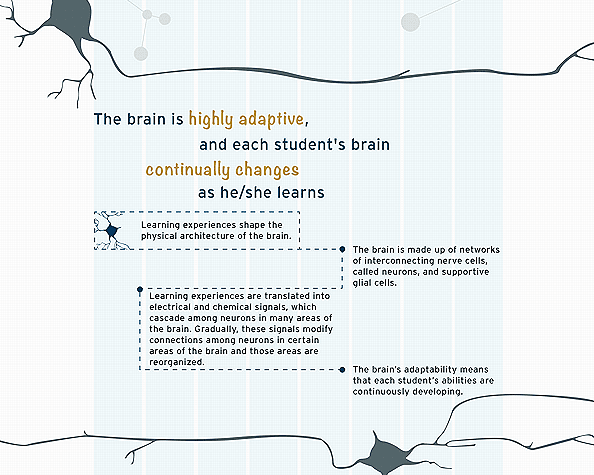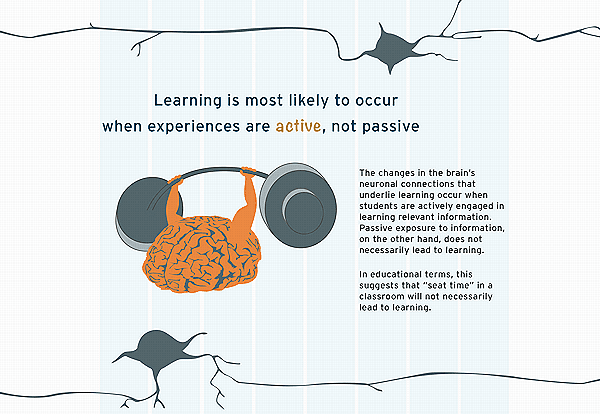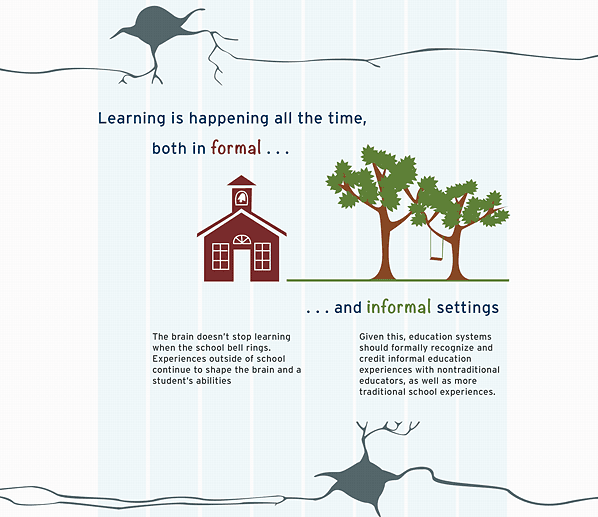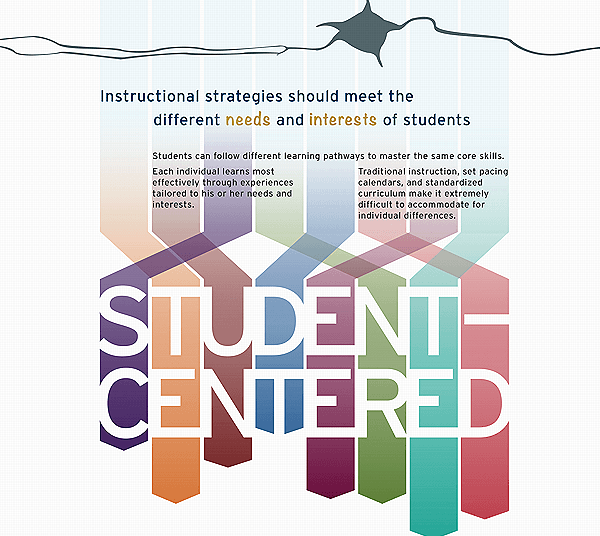Students at the Center and the Jobs for the Future created this infographic: Brainy Approaches to Learning about the brain science behind learning. It is used to illustrate the research from the report "Mind, Brain and Research" that answers the questions:
- What does brain research tell us about how we learn and how learning, in turn, shapes the architecture of the brain?
- What is the connection between the stress of poverty and the impact of emotions on learning?
We divided the infographic in separate sections to explain in more detail how brain science behind learning supports the concept of Personalized Learning. When you review this and understand that each brain is unique and changes as it learns, personalizing learning makes sense.

The brain changes when you learn. This is called "neuroplasticity" which means that our brains continually change and grow as we learn new things. This means when you learn something new, your brain makes new connections. The cognitive neuroscience and brain imaging technology have discovered how malleable the brain is and has refuted the idea that a person's mind is fixed or static. In fact, it is dynamic and responsive to experiences throughout their life. [Source: “Expanding Our ‘Frames’ of Mind for Education and the Arts” by Jennifer Groff in Harvard Educational Review, Spring 2013 (Vol. 83, #1, p. 15-39)]

You learn when your brain is active. Your brain is even active when you reflect on your learning. It is all about experiencing learning in an active role. It is about how we help learners develop questions about the information they read or hear; an inquiring mind that wonders, discovers, questions and expands their thinking. An active mind that has a growth mindset is one that knows how to learn, unlearn and relearn.

Learning happens all the time not just in school. All of us started out as learners or we would not have walked and talked. It is in our DNA. You are having experiences all day long when you plan, when you read, when you are in a conversation with someone. With the advent of mobile devices as a standard tool, learning can and should take place, anytime and anywhere. Accessibility for all learners will be instrumental for this to happen.

The principles of Universal Design for Learning (UDL) provides a lens for teachers to understand how learners learn best; their strengths, challenges, aptitudes, interests and yes, their passions. With this understanding, teachers are better informed in how to universally- design their instruction that can reduce barriers to learning as well as optimize the levels of support and challenge to meet the needs and interests of all learners in the classroom. (Universal Design for Learning is a registered trademark of CAST)

It is all about the learner and learner-centered approaches. Here is just a glimpse of what that could look like and mean. Understanding how each learner is motivated and engaged is central in designing learner-centered environments. The essential elements in creating learning environments that provide motivation and engagement is to give the learner voice and choice in the learning so that they have a stake in what they learn and how they learn. In this new learning environment, the role of the teacher and learner changes. The teacher's role changes to one as a co-designer, facilitator and partner in learning. For the learner, they learn how to co-design lessons and assessments and ultimately direct their own learning, always reflecting on their learning to demonstrate mastery.
Source: Personalize Learning

